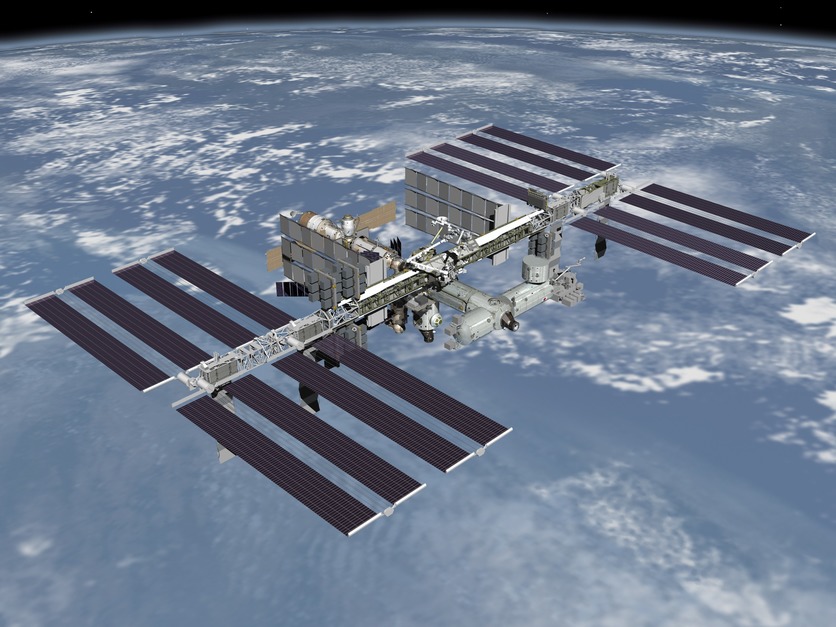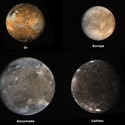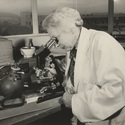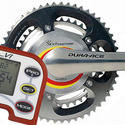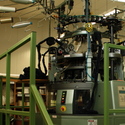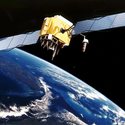A satellite1 is anything that orbits around another object. Moons are natural satellites that orbit2 around planets, whereas artificial satellites are objects that people have made and launched into orbit using rockets.
There are over 3,000 active satellites orbiting the Earth with a range of functions. We are becoming increasingly dependent upon them, especially in the areas of weather3 monitoring, navigation assistance, communications, Earth and space observation and national security.
The science ideas that allow satellites to remain in orbit are principally ones of gravitational forces and circular motion.
Gravity and satellite motion
Gravity4 is a force5 that attracts all objects towards each other. It is gravity that keeps the Earth’s natural satellite, the Moon, and its largest artificial satellite, the International Space Station (ISS), in orbit around the Earth. However, both these satellites have sideways motion in the form of orbital speed that keeps them from falling back to Earth. Find out more in the article Gravity and satellite motion.
Natural satellites
Moons are natural satellites that orbit around planets. Other space objects such as planets, asteroids6 and comets can be regarded as satellites.
The Galilean moons of Jupiter can be viewed with the aid of binoculars or a simple telescope, and the timing of the Moon’s passage around the Earth has led to the definition of two types of month – sidereal and synodic.
Artificial satellites
There are thousands of active artificial satellites orbiting the Earth. The size, altitude7 and design of a satellite depend on its purpose. Although communication, weather, navigation and observation satellites come in a wide range of sizes, they do have common basic parts such as a power source, propulsion system, computer system and communication system. Learn about how satellites are launched into space and how some of them have become space junk.
Communications satellites
Communications satellites are used to send and receive radio signals for television, phone or internet communications. Large concave reflectors called satellite dishes are normally used to send and receive these signals. Without these satellites, the connectivity of the ‘global village’ would collapse.
Revolutionary ideas
Since the earliest times, humans have made observations of the night sky. These observations, particularly of the Earth, Moon, Sun and planets (visible to the naked eye), led to the development of models to explain the movement of these natural satellites as seen in the night sky. Over time, there was a move from the geocentric model to the heliocentric model. Find out more in the article Our solar system – revolutionary ideas and the timeline History of satellites.
Meet the scientists
Dr Allan McInnes is a senior lecturer in the Electrical and Computer Engineering Department of the University of Canterbury. His extensive experience in the satellite industry along with his excellent communication skills feature in several of the video clips.
Dr Wolfgang Rack is a senior lecturer in the Gateway Antarctica programme at the University of Canterbury. One of his research projects involves measuring sea-ice thickness in Antarctica using the CryoSat-2 satellite
Dr Adrian McDonald is a senior lecturer in the Physics and Astronomy Department of the University of Canterbury. His ozone depletion8 work and Antarctic climate measurement research take him to Antarctica for 2–3 weeks each year.
Kelvin Barnsdale is senior research engineer in the College of Engineering at the University of Canterbury. His expertise9 in radio frequencies and electronics10 led to work on Space Shuttle11 missions and designing GPS12 systems.
Warwick Holmes is an avionics systems engineer who helped to build, test and launch the Rosetta spacecraft.
Take up the challenge
Student activities include a mix of hands-on and literacy-based investigations. Consider beginning a teaching sequence with Gravity and satellites – true or false? The activity is supported by the teacher resource Alternative conceptions about gravity and is a useful pretest to establish student understanding.
Students turn their eyes to the night sky to observe natural satellites and to spot artificial satellites – like the ISS – as they pass overhead. Back indoors, students can hunt for satellites online with a webquest.
Two activities use models to teach science concepts. Scale model for satellite orbits explores satellite altitudes and satellite motion. Investigating satellite dishes uses an umbrella as a curved reflector to increase a cellphone's Wi-Fi signal.
Question bank
The Investigating satellites – question bank provides an initial list of questions satellites and places where their answers can be found. The questions support an inquiry approach.
Key terms
For explanations of key concepts, see Investigating satellites – key terms.
Timeline
Explore the timeline to see key dates relating to early discoveries about natural and artificial satellites in this timeline.
Related content
Aotearoa New Zealand in space is an introductory article that links the galaxy of resources created to highlight and support learning about the country’s growing space industry. The context for learning provides curriculum and pedagogical information when using the resources.
Discover how a tiny CubeSat called CAPSTONE is playing a key role in returning humans to the Moon.
- satellite: Any object that orbits around another object.
- orbit: The path of an object as it revolves around another object. For example, the path the Moon takes as it moves around the Earth is its orbit.
- weather: Daily or short-term conditions like temperature, cloud cover, precipitation and wind affecting a certain area.
- gravity: The force attracting something towards the centre of Earth (or other large mass, like a moon or planet) – the reason that things fall to Earth.
- force: A push or a pull that causes an object to change its shape, direction and/or motion.
- asteroid: A celestial lump, hundreds of kilometres wide, composed of rock and iron, that orbits the Sun. Most asteroids lie in a belt between the orbits of Mars and Jupiter and are thought to be left-over bits from the formation of the Solar System.
- altitude: 1. The height of something, usually height above sea level. 2. In astronomy, the angular distance of a natural or artificial satellite above the horizon.
- ozone depletion: This term commonly refers to a reduction of ozone molecules in the atmosphere, which protect life on Earth from UV radiation. This is most prevalent over the poles and along the equator.
- expertise: Having excellent knowledge or skills in a particular area.
- electronics: 1. The study of the behaviour and control of electrons. This field has expanded enormously with the discovery of semiconductors. 2. The generic term for hardware used to build electrical components.
- space shuttle: A reusable NASA spacecraft that carries astronauts, space station material and satellites into a low orbit around Earth.
- GPS: Global positioning system. Uses satellites, computers and receivers to determine the exact position of a receiver on Earth by calculating the time difference for signals from different satellites to reach the receiver.
